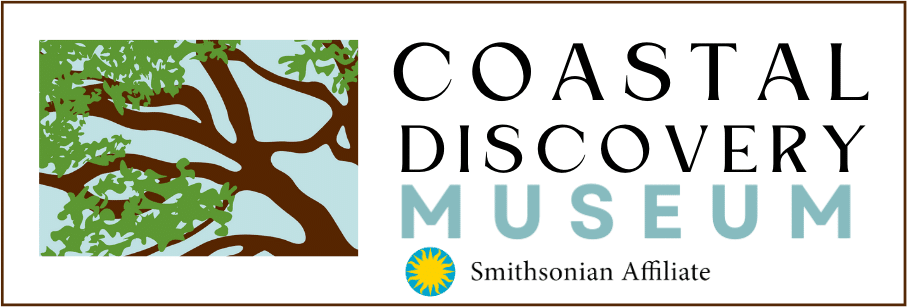A fun day of educational adventures is a great way to inspire and spark the interest of your students. The Museum offers a variety of standards-based, hands-on cultural history and natural history experiences for students. Learn and grow through up-close encounters at the Coastal Discovery Museum (located on the historic Honey Horn property) and/or at a variety of other inspiring locations.
Reservations available Monday – Friday. Fees vary depending on program(s) selected. A ratio of one adult chaperone per 10 students is required.
Contact:
Dawn Brut - Director of Education
[email protected]
(843) 689 - 6767 ext: 228
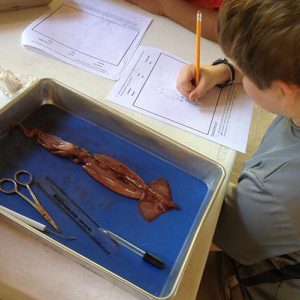
A fun day of educational adventures is a great way to inspire and spark the interest of your students. The Museum offers a variety of standards-based, hands-on cultural history and natural history experiences for students. Learn and grow through up-close encounters at the Coastal Discovery Museum (located on the historic Honey Horn property) and/or at a variety of other inspiring locations.
Reservations available Monday – Friday. Fees vary depending on program(s) selected. A ratio of one adult chaperone per 10 students is required.
Contact:
Dawn Brut - Director of Education
[email protected]
(843) 689 - 6767 ext: 228
HISTORY EXPERIENCES
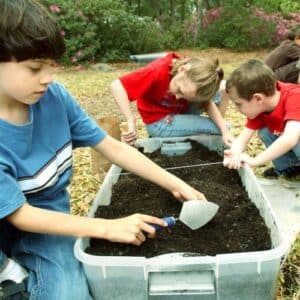
CAMP
DIG-IT Get an introduction to the wonderful world of archaeology by a professional archaeologist. Students will have the opportunity to learn about the past as they excavate and identify artifacts from a simulated site dig box.
Grades: 3rd – 8th
Social Study Correlations: 3.2.ER, 4.1.CO, 6.3.CE, 8.1.CC
CAMP
DIG-IT Get an introduction to the wonderful world of archaeology by a professional archaeologist. Students will have the opportunity to learn about the past as they excavate and identify artifacts from a simulated site dig box.
Grades: 3rd – 8th
Social Study Correlations: 3.2.ER, 4.1.CO, 6.3.CE, 8.1.CC

CIVIL WAR
ON HILTON HEAD The Civil War is one of the most important events in the history or our country. Learn about what Hilton Head Island looked like from 1861-65, when Union soldiers occupied the island. Students will recreate the battle of Port Royal with Commander Percival Drayton as they learn about this significant historic event.
Grades: 3rd - 12th
Social Study Correlations: 4.4.CO, 4.4.CE, 4.4.CX, 4.4.E
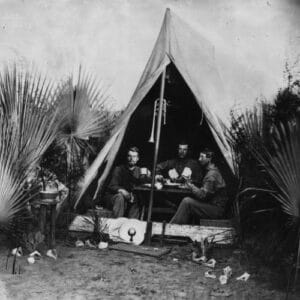
CIVIL WAR
ON HILTON HEAD The Civil War is one of the most important events in the history or our country. Learn about what Hilton Head Island looked like from 1861-65, when Union soldiers occupied the island. Students will recreate the battle of Port Royal with Commander Percival Drayton as they learn about this significant historic event.
Grades: 3rd - 12th
Social Study Correlations: 4.4.CO, 4.4.CE, 4.4.CX, 4.4.E

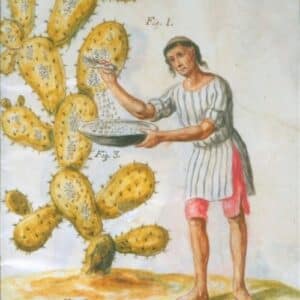
COOPERATION AND CONFLICT:
NATIVE AMERICANS AND EUROPEANS IN PORT ROYAL SOUND Explore the interactions the Native Americans in the Port Royal Sound area had with the Europeans who came to settle there. Discover how trade between the two groups led to cooperation and then became a source of conflict. Students will make (and use) a red dye from dried cochineal bugs which the Native Americans traded to the Europeans for iron tools and other goods.
Grades: 3rd - 12th
Social Study Correlations: 3.2.ER, 3.4.HS, 3.5.HS, 4.1.CO, 4.1.CX, 6.3.CO, 6.3.CE, 6.3.CX, 8.1.CC
COOPERATION AND CONFLICT:
NATIVE AMERICANS AND EUROPEANS IN PORT ROYAL SOUND Explore the interactions the Native Americans in the Port Royal Sound area had with the Europeans who came to settle there. Discover how trade between the two groups led to cooperation and then became a source of conflict. Students will make (and use) a red dye from dried cochineal bugs which the Native Americans traded to the Europeans for iron tools and other goods.
Grades: 3rd - 12th
Social Study Correlations: 3.2.ER, 3.4.HS, 3.5.HS, 4.1.CO, 4.1.CX, 6.3.CO, 6.3.CE, 6.3.CX, 8.1.CC

INDIGO
TIE-DYE Investigate the historical importance of indigo with a costumed presenter and learn how and why this plant became a valuable cash crop in South Carolina during the 1700’s. Students will tie-dye a t-shirt with indigo dye as they explore historic process of making indigo dye from the indigo plant. Students provide one white t-shirt.
Grades: 2nd – 12th
Social Study Correlations: 3.2.ER, 3.4.HS, 3.5.HS, 4.1.CO, 4.1.CE, 4.1.CC, 4.1.E, 6.3.CE, 8.1.CE, 8.1.P
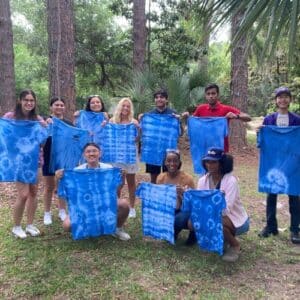
INDIGO
TIE-DYE Investigate the historical importance of indigo with a costumed presenter and learn how and why this plant became a valuable cash crop in South Carolina during the 1700’s. Students will tie-dye a t-shirt with indigo dye as they explore historic process of making indigo dye from the indigo plant. Students provide one white t-shirt.
Grades: 2nd – 12th
Social Study Correlations: 3.2.ER, 3.4.HS, 3.5.HS, 4.1.CO, 4.1.CE, 4.1.CC, 4.1.E, 6.3.CE, 8.1.CE, 8.1.P

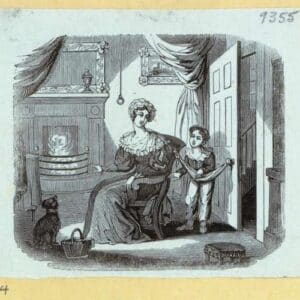
LIFE IN
COLONIAL TIMES Life was different for people in colonial South Carolina than it is today, but in some ways it was very much the same. Students will compare and contrast life then and now by looking at pictures and examining reproduction artifacts. They will have a chance to play 18th century games and make an authentic 18th century headache sack.
Grades: K – 3rd
Social Study Correlations: 3.4.PR, 3.4.AG, 4.1.P
LIFE IN
COLONIAL TIMES Life was different for people in colonial South Carolina than it is today, but in some ways it was very much the same. Students will compare and contrast life then and now by looking at pictures and examining reproduction artifacts. They will have a chance to play 18th century games and make an authentic 18th century headache sack.
Grades: K – 3rd
Social Study Correlations: 3.4.PR, 3.4.AG, 4.1.P

LIVING HISTORY
WITH CAPTAIN WILLIAM HILTON Meet Captain William Hilton and hear about how and why his exploration of the Carolina coast in 1663 lead to an island being named after him. Learn about life aboard his 17th century sailing ship, examine important navigation tools like a chip log (used to determine speed) and a lead line (used to determine water depth), and practice some useful sailors knots.
Grades: 3rd – 8th
Social Study Correlations: 3.1.AG, 3.2.ER, 3.4.HS, 3.5.HS, 4.1.CO, 4.1.CE, 4.1.CX, 6.3.P, 8.1.CO, 8.1.P
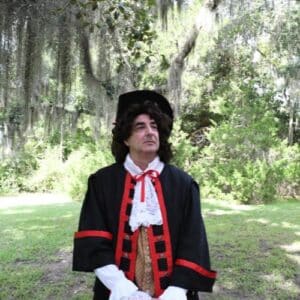
LIVING HISTORY
WITH CAPTAIN WILLIAM HILTON Meet Captain William Hilton and hear about how and why his exploration of the Carolina coast in 1663 lead to an island being named after him. Learn about life aboard his 17th century sailing ship, examine important navigation tools like a chip log (used to determine speed) and a lead line (used to determine water depth), and practice some useful sailors knots.
Grades: 3rd – 8th
Social Study Correlations: 3.1.AG, 3.2.ER, 3.4.HS, 3.5.HS, 4.1.CO, 4.1.CE, 4.1.CX, 6.3.P, 8.1.CO, 8.1.P

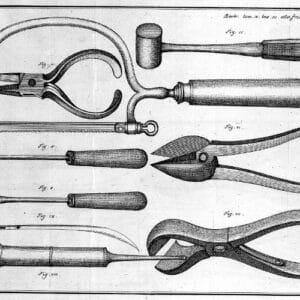
MEDICINE IN
COLONIAL TIMES What was health care like for people in colonial South Carolina? Students will learn how people in the past dealt with sickness and disease through a presentation and by examining reproduction artifacts. They will then analyze the treatment given to George Washington during his final illness.
Grades: 4th - 12th
Social Study Correlations: 4.1.E, 4.2.E
MEDICINE IN
COLONIAL TIMES What was health care like for people in colonial South Carolina? Students will learn how people in the past dealt with sickness and disease through a presentation and by examining reproduction artifacts. They will then analyze the treatment given to George Washington during his final illness.
Grades: 4th - 12th
Social Study Correlations: 4.1.E, 4.2.E

NATIVE AMERICANS
ON HILTON HEAD Image what coastal life was like four thousand years ago. Use artifacts, drawings, and replicas, to learn about who lived here and how they survived. Students will examine Native American pottery and create replica pinch pots using clay.
Grades: K – 3rd
Social Study Correlations: K.H.2, K.H.3, K.E.1, 1.H.3, 2.H.3, 3.2.2.ER, 3.2.3.ER
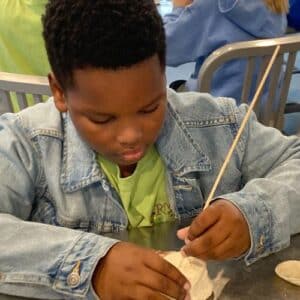
NATIVE AMERICANS
ON HILTON HEAD Image what coastal life was like four thousand years ago. Use artifacts, drawings, and replicas, to learn about who lived here and how they survived. Students will examine Native American pottery and create replica pinch pots using clay.
Grades: K – 3rd
Social Study Correlations: K.H.2, K.H.3, K.E.1, 1.H.3, 2.H.3, 3.2.2.ER, 3.2.3.ER

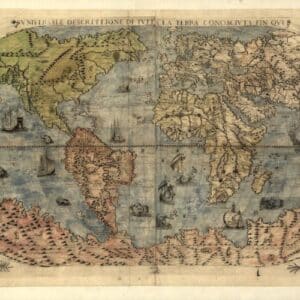
16TH CENTURY EXPLORATIONS
& SETTLEMENTS IN THE SOUTHEAST Learn about eight different 16th century Spanish and French explorers and their settlement attempts in the Southeastern US. Match information about each explorer with their settlement through informational cards, maps, and reproduction artifacts. Students will make a piece of rope from palm fronds to take with them just like the ones Natives Americans made for the French.
Grades: 4th – 12th
Social Study Correlations: 3.2 ER, 3.4 HS, 3.5 HS, 3.5 AG, 4.1 CO, 4.1 CX, 6.3, CO, 6.3 CE, 6.3 CX, 6.3 E, 8.1 CC
16TH CENTURY EXPLORATIONS
& SETTLEMENTS IN THE SOUTHEAST Learn about eight different 16th century Spanish and French explorers and their settlement attempts in the Southeastern US. Match information about each explorer with their settlement through informational cards, maps, and reproduction artifacts. Students will make a piece of rope from palm fronds to take with them just like the ones Natives Americans made for the French.
Grades: 4th – 12th
Social Study Correlations: 3.2 ER, 3.4 HS, 3.5 HS, 3.5 AG, 4.1 CO, 4.1 CX, 6.3, CO, 6.3 CE, 6.3 CX, 6.3 E, 8.1 CC

NATURAL HISTORY EXPERIENCES
ALL ABOUT OWLS
(OWL PELLET DISSECTION) From beak to tail, birds living in the Lowcountry exhibit some amazing adaptations for survival in diverse environments. In this avian investigation, students will dissect owl pellets and discover what makes owls the ultimate nocturnal predator.
Grades: 2nd – 12th
Science Correlations: 3-LS4-3, 4-LS1-1, 4-LS1-2, 5-PS3-1, 5-LS2-1
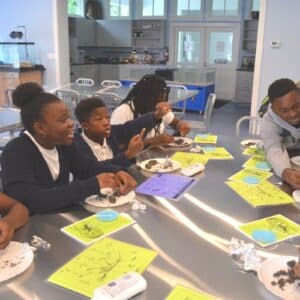
ALL ABOUT OWLS
(OWL PELLET DISSECTION) From beak to tail, birds living in the Lowcountry exhibit some amazing adaptations for survival in diverse environments. In this avian investigation, students will dissect owl pellets and discover what makes owls the ultimate nocturnal predator.
Grades: 2nd – 12th
Science Correlations: 3-LS4-3, 4-LS1-1, 4-LS1-2, 5-PS3-1, 5-LS2-1

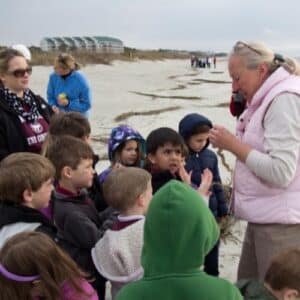
BEACH
DISCOVERY Let’s go to the beach! Students will explore the intertidal zone and discover the amazing adaptations of organisms found in this ever-changing habitat.
Meets at a Hilton Head Island Public Beach Access Area.
Grades: PreK – 12th
Science Correlations: K-LS1-1. K-ESS2-2, K-ESS3-1, K-ESS3-3, 1-LS1-1, 1-LS1-2, 2-LS4-1, 2-ESS2-1, 2-ESS2-3, 2-ESS3-1, 3-LS1-1, 3-LS3-2, 3-LS4-2, 3-LS4-3, 3-LS4-4, 4-LS1-1, 4-LS1-2, 4-ESS2-1, 5-LS2-1, 5-ESS2-2
BEACH
DISCOVERY Let’s go to the beach! Students will explore the intertidal zone and discover the amazing adaptations of organisms found in this ever-changing habitat.
Meets at a Hilton Head Island Public Beach Access Area.
Grades: PreK – 12th
Science Correlations: K-LS1-1. K-ESS2-2, K-ESS3-1, K-ESS3-3, 1-LS1-1, 1-LS1-2, 2-LS4-1, 2-ESS2-1, 2-ESS2-3, 2-ESS3-1, 3-LS1-1, 3-LS3-2, 3-LS4-2, 3-LS4-3, 3-LS4-4, 4-LS1-1, 4-LS1-2, 4-ESS2-1, 5-LS2-1, 5-ESS2-2

BUTTERFLY
DISCOVERY Examine eggs, caterpillars, chrysalises, and adult butterflies in our 1,200 square foot outdoor butterfly enclosure. Students will learn about butterfly life cycles, the different plants butterflies rely on for survival, and insect adaptations. (May-Sept only).
Grades: PreK – 12th
Science Correlations: K-LS1-1. K-ESS2-2, K-ESS3-1, K-ESS3-3, 1-LS1-1, 1-LS1-2, 2-ESS3-1, 3-LS1-1, 3-LS4-3, 3-LS4-4, 4-LS1-1, 4-LS1-2, 5-PS3-1, 5-LS2-1
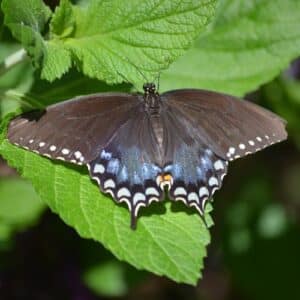
BUTTERFLY
DISCOVERY Examine eggs, caterpillars, chrysalises, and adult butterflies in our 1,200 square foot outdoor butterfly enclosure. Students will learn about butterfly life cycles, the different plants butterflies rely on for survival, and insect adaptations. (May-Sept only).
Grades: PreK – 12th
Science Correlations: K-LS1-1. K-ESS2-2, K-ESS3-1, K-ESS3-3, 1-LS1-1, 1-LS1-2, 2-ESS3-1, 3-LS1-1, 3-LS4-3, 3-LS4-4, 4-LS1-1, 4-LS1-2, 5-PS3-1, 5-LS2-1

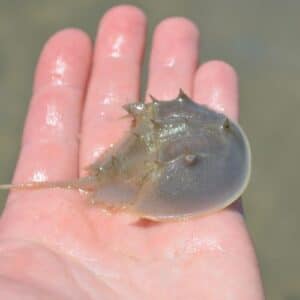
HORSESHOE CRABS:
A LIVING FOSSIL With its tough, helmet-like body and long, pointed tail, the horseshoe crab is one of the most intriguing and misunderstood marine invertebrates found in our marine waters. Dive in with us as we explore the horseshoe crab and investigate the life cycle and adaptations of this living fossil.
Grades: 2nd – 12th
Science Correlations: 2-ESS3-1, 3-LSI-1, 3-LS4-1, 3-LS4-2, 3-LS4-3, 3-LS4-4, 4-LS1-1, 4-LS1-1, 5-LS2-1
HORSESHOE CRABS:
A LIVING FOSSIL With its tough, helmet-like body and long, pointed tail, the horseshoe crab is one of the most intriguing and misunderstood marine invertebrates found in our marine waters. Dive in with us as we explore the horseshoe crab and investigate the life cycle and adaptations of this living fossil.
Grades: 2nd – 12th
Science Correlations: 2-ESS3-1, 3-LSI-1, 3-LS4-1, 3-LS4-2, 3-LS4-3, 3-LS4-4, 4-LS1-1, 4-LS1-1, 5-LS2-1

SALT MARSH
DISCOVERY Explore the Salt Marsh! Get an up-close look at this unique and important habitat. Observe crabs, mussels, snails, and more while learning about their biology and behavior.
Grades: PreK – 12th
Science Correlations: K-LS1-1. K-ESS2-2, K-ESS3-1, K-ESS3-3, 1-LS1-1, 1-LS1-2, 2-LS2-1, 2-LS4-1, 2-ESS2-1, 2-ESS2-3, 2-ESS3-1, 3-LS1-1, 3-LS3-2, 3-LS4-2, 3-LS4-3, 3-LS4-4, 4-LS1-1, 4-LS1-2, 4-ESS2-1, 5-LS2-1
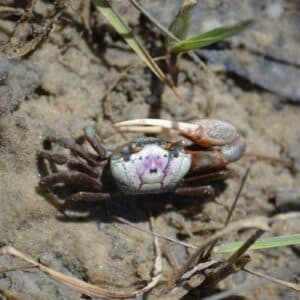
SALT MARSH
DISCOVERY Explore the Salt Marsh! Get an up-close look at this unique and important habitat. Observe crabs, mussels, snails, and more while learning about their biology and behavior.
Grades: PreK – 12th
Science Correlations: K-LS1-1. K-ESS2-2, K-ESS3-1, K-ESS3-3, 1-LS1-1, 1-LS1-2, 2-LS2-1, 2-LS4-1, 2-ESS2-1, 2-ESS2-3, 2-ESS3-1, 3-LS1-1, 3-LS3-2, 3-LS4-2, 3-LS4-3, 3-LS4-4, 4-LS1-1, 4-LS1-2, 4-ESS2-1, 5-LS2-1

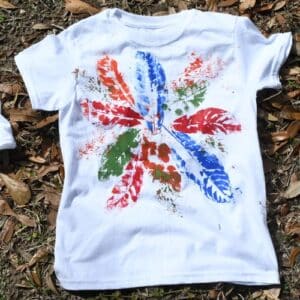
NATIVE PLANT HIKE
& PLANT PRINTS Carnivorous plants, edible plants, host plants, poisonous plants! Take a short plant hike and discover special adaptations, historical uses, and importance of some fascinating native plants. This experience can also includes a Plant Print T-Shirt activity (students provide their own plain white t-shirt).
Grades: K – 12th
Science Correlations: K-LS1-1. K-ESS2-2, K-ESS3-1, K-ESS3-3, 1-LS1-1, 2-LS2-1, 2LS4-1, 2-ESS3-1, 3-LS1-1, 3-LS4-2, 3-LS4-3, 3-LS4-4, 4-LS1-1, 4-LS1-2, 5-PS3-1, 5-LS1-1, 5-LS2-1
NATIVE PLANT HIKE
& PLANT PRINTS Carnivorous plants, edible plants, host plants, poisonous plants! Take a short plant hike and discover special adaptations, historical uses, and importance of some fascinating native plants. This experience can also includes a Plant Print T-Shirt activity (students provide their own plain white t-shirt).
Grades: K – 12th
Science Correlations: K-LS1-1. K-ESS2-2, K-ESS3-1, K-ESS3-3, 1-LS1-1, 2-LS2-1, 2LS4-1, 2-ESS3-1, 3-LS1-1, 3-LS4-2, 3-LS4-3, 3-LS4-4, 4-LS1-1, 4-LS1-2, 5-PS3-1, 5-LS1-1, 5-LS2-1

PHASCINATING
PHYTOPLANKTON Using scientific sampling techniques, students will investigate the types of plankton that live in our coastal waters. Through the lens of a microscope, students will learn to identify different phytoplankton and zooplankton species and understand the many reasons these microscopic marine organisms are so important to our coastal waters.
Grades: 2nd - 12th
Science Correlations: 2-ESS3-1, 3-LS1-1, 3-LS4-3, 3-LS4-4, 4-LS1-1, 4-LS1-2, 5-LS2-1, 6-LS1-1, 7-LS1-6
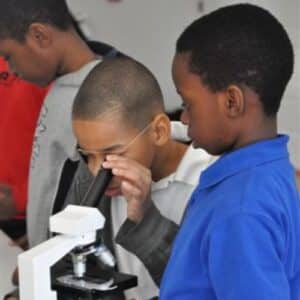
PHASCINATING
PHYTOPLANKTON Using scientific sampling techniques, students will investigate the types of plankton that live in our coastal waters. Through the lens of a microscope, students will learn to identify different phytoplankton and zooplankton species and understand the many reasons these microscopic marine organisms are so important to our coastal waters.
Grades: 2nd - 12th
Science Correlations: 2-ESS3-1, 3-LS1-1, 3-LS4-3, 3-LS4-4, 4-LS1-1, 4-LS1-2, 5-LS2-1, 6-LS1-1, 7-LS1-6

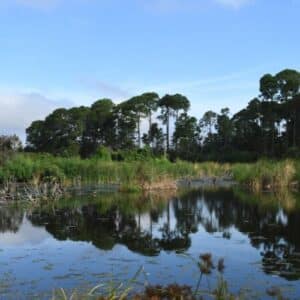
PINCKNEY ISLAND
HABITAT HIKE Explore the diversity of habitats that Pinckney National Wildlife Refuge has to offer. Experience the maritime forest, salt marsh, and freshwater ponds. Discover the different plants and animals that can be found in each unique habitat. (1.5 miles roundtrip).
Meets at Pinckney Island National Wildlife Refuge (no restrooms).
Grades: 2nd - 12th
Science Correlations: 2.LS2-1, 2-LS4-1, 2-ESS2-3, 2-ESS3-1, 3-LS1-1, 3-LS4-2, 3-LS4-3, 3-LS4-4, 4-LS1-1, 4-LS1-2, 5-PS3-1, 5-LS2-1
PINCKNEY ISLAND
HABITAT HIKE Explore the diversity of habitats that Pinckney National Wildlife Refuge has to offer. Experience the maritime forest, salt marsh, and freshwater ponds. Discover the different plants and animals that can be found in each unique habitat. (1.5 miles roundtrip).
Meets at Pinckney Island National Wildlife Refuge (no restrooms).
Grades: 2nd - 12th
Science Correlations: 2.LS2-1, 2-LS4-1, 2-ESS2-3, 2-ESS3-1, 3-LS1-1, 3-LS4-2, 3-LS4-3, 3-LS4-4, 4-LS1-1, 4-LS1-2, 5-PS3-1, 5-LS2-1

REPTILES & AMPHIBIANS
OF THE LOWCOUNTRY Alligators, snakes, and turtles oh my! Decipher the difference between reptiles and amphibians. Take a closer look at some live reptiles and amphibians and discover their special and unique survival adaptations.
Grades: PreK - 12th
Science Correlations: K-LS1-1. K-ESS2-2, K-ESS3-1, K-ESS3-3, 1-LS1-1, 1-LS1-2, 2-LS4-1, 2-ESS3-1, 3-LS1-1, 3-LS4-2, 3-LS4-3, 3-LS4-4, 4-LS1-1, 4-LS1-2, 5LS2-1
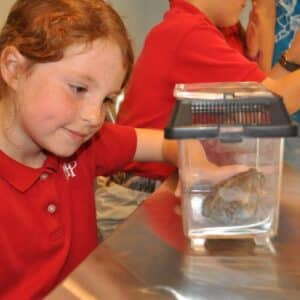
REPTILES & AMPHIBIANS
OF THE LOWCOUNTRY Alligators, snakes, and turtles oh my! Decipher the difference between reptiles and amphibians. Take a closer look at some live reptiles and amphibians and discover their special and unique survival adaptations.
Grades: PreK - 12th
Science Correlations: K-LS1-1. K-ESS2-2, K-ESS3-1, K-ESS3-3, 1-LS1-1, 1-LS1-2, 2-LS4-1, 2-ESS3-1, 3-LS1-1, 3-LS4-2, 3-LS4-3, 3-LS4-4, 4-LS1-1, 4-LS1-2, 5LS2-1

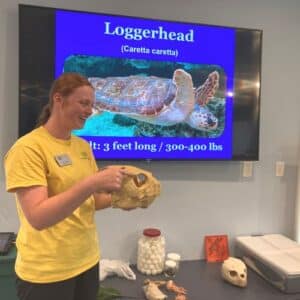
SEA TURTLE
LIFE Sea turtles live an extraordinary life. Explore the amazing journey of Loggerhead Sea Turtles from egg to adulthood. Discover just how easy it is to help protect these fascinating sea creatures.
Grades: 1st - 12th
Science Correlations: 1.LS1-1, 1-LS1-2, 2-ESS3-1, 3-LS1-1, 3-LS4-3, 3-LS4-4, 4-LS1-1, 4-LS1-2, 5-LS2-1
SEA TURTLE
LIFE Sea turtles live an extraordinary life. Explore the amazing journey of Loggerhead Sea Turtles from egg to adulthood. Discover just how easy it is to help protect these fascinating sea creatures.
Grades: 1st - 12th
Science Correlations: 1.LS1-1, 1-LS1-2, 2-ESS3-1, 3-LS1-1, 3-LS4-3, 3-LS4-4, 4-LS1-1, 4-LS1-2, 5-LS2-1

SQUID
DISSECTION Explore the fascinating lives of the fastest swimming marine invertebrate. Examine the external and internal anatomy of the squid through a dissection activity.
Grades: 4th – 12th
Science Correlations: 4-LS1-1, 4-LS1-2, 5-LS2-1
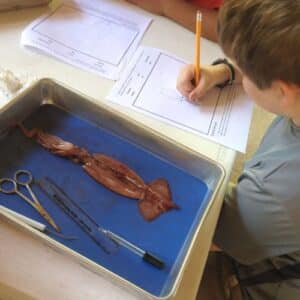
SQUID
DISSECTION Explore the fascinating lives of the fastest swimming marine invertebrate. Examine the external and internal anatomy of the squid through a dissection activity.
Grades: 4th – 12th
Science Correlations: 4-LS1-1, 4-LS1-2, 5-LS2-1

THANK YOU!
Thank you to our sponsors for providing funding that enables us to provide high quality,
standard-based educational experiences for school groups.
- The Bargain Box
- Breedlove Foundation
- Palmetto Electric Trust
- SC Humanities
THANK YOU!
Thank you to our sponsors for providing funding that enables us to provide high quality, standard-based educational experiences for school groups.
- The Bargain Box
- Breedlove Foundation
- Palmetto Electric Trust
- SC Humanities
